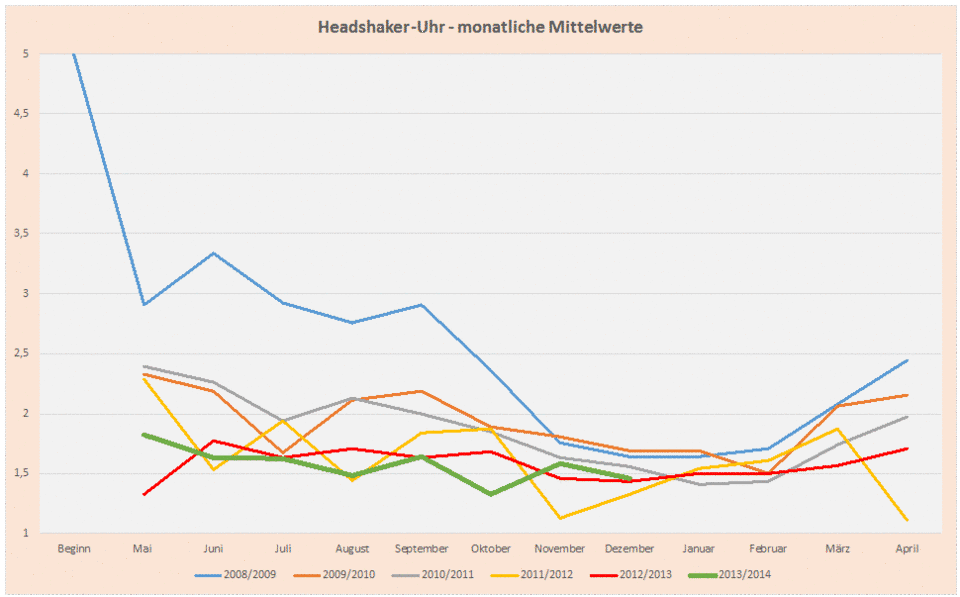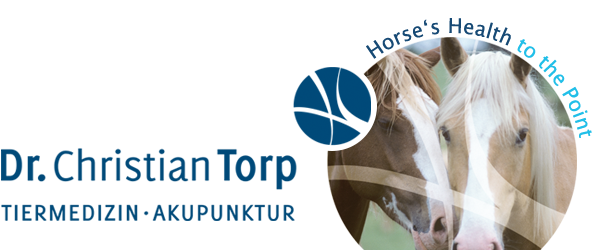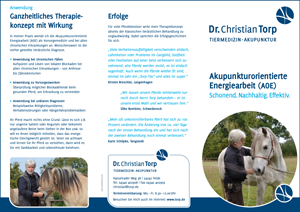Headshaker Syndrome
Clinical study by Dr. Christian Torp
According to TCM (traditional Chinese medicine) every disturbance of the general condition and every sickness have their reason in the unbalance of Yin and Yang resp. in Qi-blockades. This applies for contumacy of horses, for cough, restless legs, lameness, summer eczema and of course also for head shakers.
I examine and treat my patients according to this thesis and can confirm that I have never seen a horse with the head shaking symptom, which did not have disturbances of the Qi-flow as well. According to my experience this can always be remedied. A horse with an intact Qi-flow should not show the head shaking symptom.
To confirm this, I started a clinical study about the HS syndrome in 2004. As far as I know, there is no convincing report about causes and therapies for this clinical picture worldwide. The veterinary academy in Hannover has been evaluating this syndrome intensively since April 2007.
The doctrine is that several disease catalysts exist, for instance defects of teeth and sinuses, sickness of eyes, ears and neck as well as allergies, and that they are, however, not the actual cause for the HS. As actual cause for HS trigeminal neuralgia is in discussion. To prove this, the clinic is campaigning for patients. It is, however, completely unclear, what would be a possible therapy if indeed a trigeminal neuralgia could be found. Infections with borna, herpes or borrelia are also discussed as possible cause of HS.
If I could reach a success rate of 70-90% within my study, this would be another proof that acupuncture is more effective than conventional procedures in treatment of chronic diseases.
Modalities of the Study & Results
The horses included in the survey, in addition to the involuntary, exaggerated head shaking, all had a typical itching of the nose. This manifested in a permanent trying to rub the nose (on the floor, the wall or the front legs) or to hide the nose (for instance in the tail of the preceding horse).
I included all head shakers I knew between the years 2004 – 2007. At the beginning of the survey these were 92 horses. At present 48 horse owners are still participating more or less active. The other horses did drop out for several reasons: no more interest or move of the proprietor, sale of the horse or euthanasia.
The biggest difficulty is to keep the motivation and faith of the horse owners. I am investing a lot of time and work in this study and I ask the owners for an active cooperation regarding documentation and information about the status of the horse.
Results
In the meantime I have done a second action with questionnaires to gain an actual status of the intermediate result.
The results of the first intermediate analysis are available as Download.
HS-Zwischenergebnisse_einer_Praxisstudie.pdf Results first intermediate analysis
The results of the second intermediate analysis are at present prepared.
The goal is to reach a healing rate of at least 70%.
Headshaker Clock
Within my study about the therapy of the head shaking syndrome I have established the “head shaker clock”. It is actualized every month and thus shows the actual state of the head shaking intensity for the horses participating in the study.
The curve „arithmetic mean “ shows the average number for all participating patients, where „five“ is the starting point and “one” means free of symptoms. The curve clearly shows the seasonal deviations and allows seeing and understanding the actual status of my therapy results.
Average values

Average values
The “result” diagram indicates the details. At present 46 horses are still participating (n = 46), the number behind (in brackets) shows the number of owners, who have sent me their estimate for the actual month. The mean value (MW) in the graphic shows the number of estimates, divided by the number of given estimates. The healing quote (HQ) is calculated by the number of participating horses with the estimate number one. The goal of the study is to achieve a constant value of 70%.
Results

Results: 1= free of symptoms; 2= nearly ok (76-99% improvement); 3 = much better (51 – 75% improvement); 4 = better (1 – 50% improvement); 5 = no change; 6 = worse than before treatment)
New participants
At present no new participants can be accepted because it is very difficult to come to correct results if the number of participants is constantly changing.


